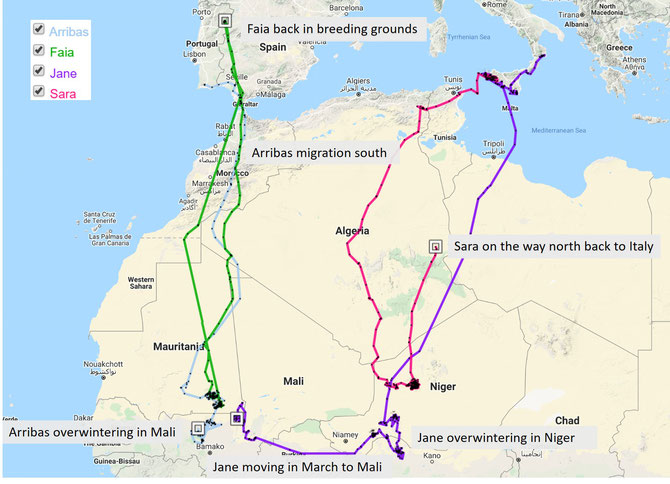
Four Egyptian Vultures that migrated to Africa last autumn are back on our radar, and we are closely following their movements. We lost the traces of them for days, weeks or even months once they reached certain areas in Africa that lack GSP coverage, but we are happy to confirm that they are alive and that they are on the move! Some vultures already arrived in Europe or are on their way back for their spring migration, but others will probably stay in Africa for the next few years since they are still young. The VCF provided the tags and monitors the movements of these four vultures as part of two different projects – LIFE Rupis in the Douro led by SPEA and an experimental release programme of Egyptian Vultures in Italy led by CERM Endangered Raptors Centre.
Faia
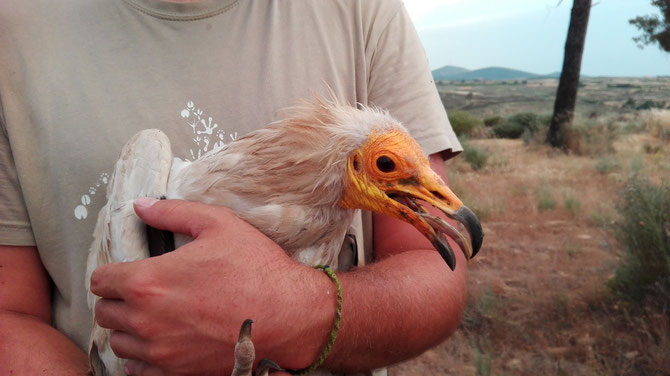
Faia is a female Egyptian Vulture that was captured and tagged at the Escalhão supplementary feeding site in June 2017, and bred successfully in the Águeda valley, on the Spanish side of the international river.
Faia had left the Douro canyon on 6 September 2019. She flew over the Strait of Gibraltar to Morocco on 9 September and was making good progress heading south.
Just like in previous years we lost track of her when she left Morocco and was entering Algeria, flying into an area with no GSM coverage in the desert – and we were without notice from her for since mid-September 2019. Thankfully, she resurfaced after six months with no news from her and on 4 March, Faia started her journey back home! On 12 March, Faia reached her nesting grounds at the Douro – we hope she will successfully breed again.
Arribas
Arribas is a juvenile Egyptian Vulture that was tagged in 2019 at the Douro in the nest within the LIFE Rupis project. Last autumn, he crossed the strait and made it successfully in Africa! But again, we stopped receiving GPS data until now – thankfully, he is alive and is overwintering in Mali. As a young bird, he will probably stay in Africa for 2 to 4 years before making his way back to Europe.
Sara
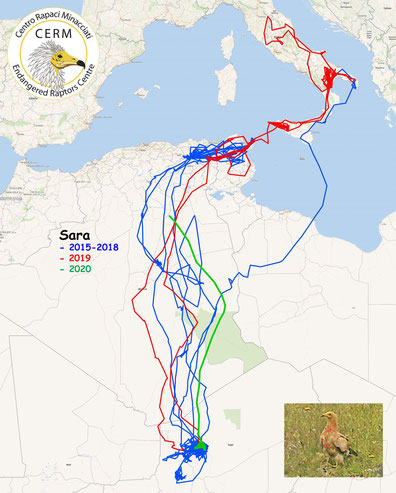
Sara hatched at the CERM Endangered Raptors Centre (Italy) in 2015 and was released in the same year by the CERM Association on behalf of the Italian Ministry for the Environment. This was part of a release programme led by the CERM, in collaboration with us here at the Vulture Conservation Foundation (VCF) and the Egyptian Vulture Captive Breeding Network (EEP). The project tests procedures to get crucial data on the feasibility and relevance of captive-breeding and reintroduction projects with this species. Ahead of her release, she was fitted with a GPS transmitter, provided by us
Following her release, she migrated to Africa where she spent four years exploring Niger, and she finally returned to Italy in May 2019. Sara spent the previous two summers in northern Africa, mainly in Algeria. After spending four months wandering between Basilicata and Calabria, she left again for Africa at the end of August together with Tobia, another bird released in 2015. Now, she is on her way back to Italy and is making her way north. Let’s hope she will arrive home safely.
Update 03/05/2020
This time Sara left Niger on 18 March, more than a month earlier compared to the start of her spring migration last year. Once Sara reached northern Africa, she spent many days travelling between Algeria and Tunisia. To protect Sara, CERM alerted ornithologists Sarra Messabhia (ANAO, Association Nationale Algérienne d’Ornithologie), Hichem Azafzaf and Claudia Feltrup-Azafzaf, respectively president and executive director of the Association “Les Amis des Oiseaux” (AAO / BirdLife Tunisia), who were able to monitor her and ensure her safety. On 27 April, Sara finally began her journey crossing the Mediterranean sea and heading towards Sicily where she stopped at Pantelleria Island for a day. Then on 28 April, she finally reached Sicily, covering over 4,000 km since the start of her spring migration.

Jane
Jane hatched in 2018 at the CERM Endangered Raptors Centre (Italy) and was released in 2019 in the framework of the LIFE Egyptian vulture project by CERM and ISPRA. She migrated to Africa last autumn, where she will most likely stay for 2 to 3 years. It is interesting to see that Jane is wandering a lot in the wintering grounds as she has so far spent some time in Niger, Nigeria, Burkina-Faso, Mali and Mauritania in contrast wit Sara and Tobia who were released in 2015 and stayed in the more eastern area for all the three years they spent in Africa.
We wish for all four vultures to have a bright future ahead in the wild and that Faia successfully breeds again this year, and hopefully, Sara will follow suit soon.
You can follow the movements of some of the tagged Egyptian Vultures by visiting the VCF’s online public maps.
LIFE Rupis
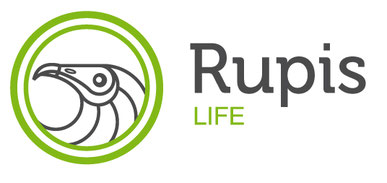
The LIFE Rupis conservation project, led by Portuguese wildlife organisation Sociedade Portuguesa para o Estudo das Aves (SPEA), and funded by the European Union’s LIFE Fund and the MAVA Foundation, is working in the cross-border Douro region of Spain and Portugal to protect and strengthen the populations of Egyptian vultures and Bonelli´s eagle. With around 135 breeding pairs, the region has one of the largest population of Egyptian vultures in Europe. Creating a network of feeding stations, improving habitat and nesting sites as well as tackling the major threats of electrocution from electricity pylons and illegal wildlife poisoning, the LIFE Rupis project will strengthen the population and improve breeding rates.

Release programme of Egyptian Vultures in Italy
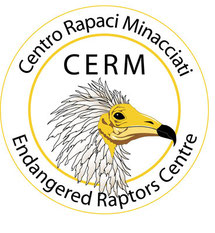
From 2003 to 2019, the CERM Association released 33 captive-bred Egyptian Vultures testing three different release techniques: fostering (2003), which was negatively assessed and thus abandoned, hacking (2004-2019), which has given the best results up to now, and delayed release (2017 and in 2019).
The Vulture Conservation Foundation supports the project by providing some GPS tags as well as supporting the monitoring of these birds since 2015. The VCF has been on the forefront of research efforts to map movements and mortality of tagged Egyptian Vultures.
Flight For Survival
The Vulture Conservation Foundation is part of BirdLife International’s campaign ‘Flight for Survival‘, which aims to raise awareness and fight the illegal killing of migratory birds in the Mediterranean.


